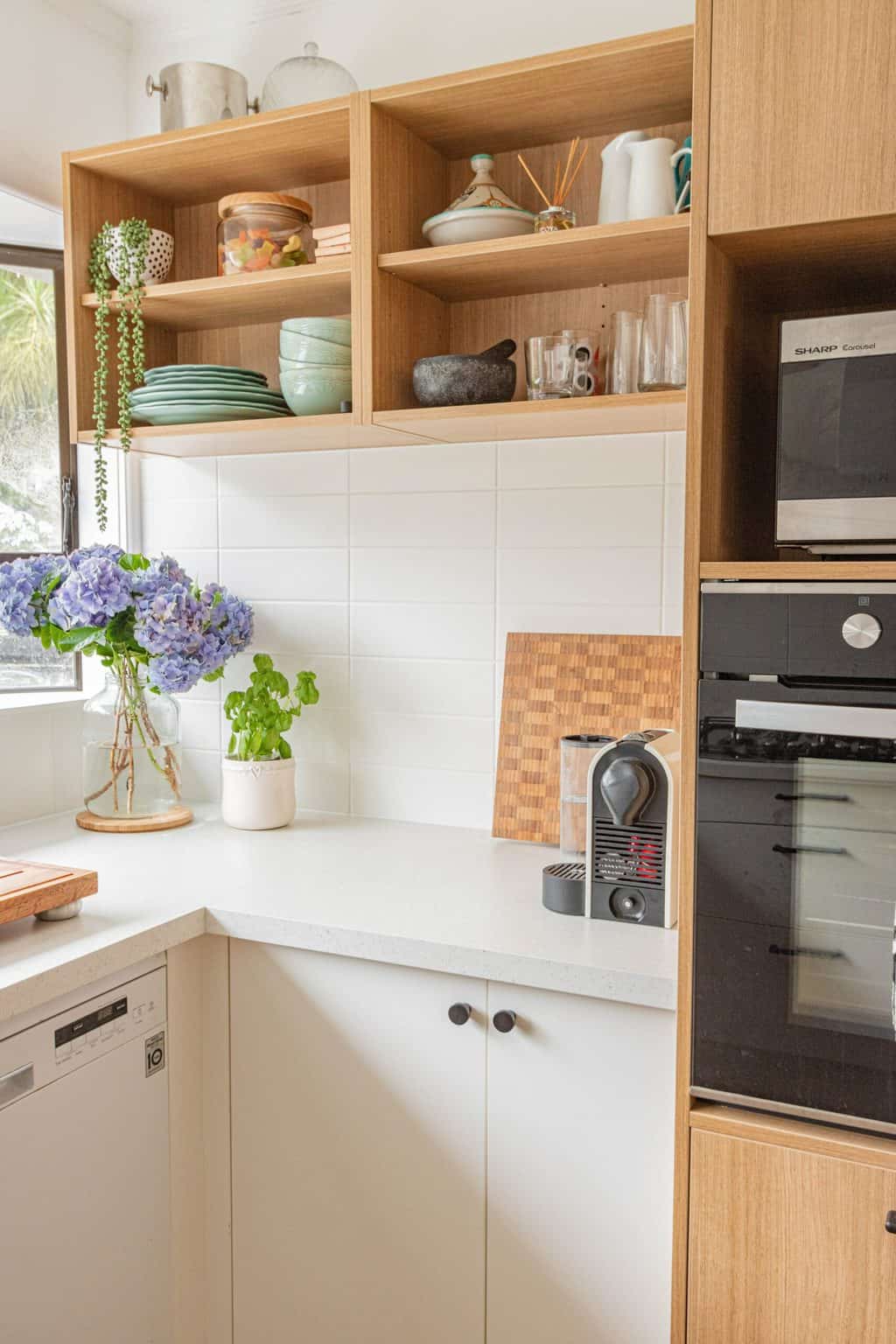As an Amazon Associate we earn from qualifying purchases.
Grease and dirt accumulate on all surfaces in the kitchen, especially on cabinets so you must know how to clean sticky wood kitchen cabinets. It’s caked with dust, and the stickiness has gotten worse over time. When this happens, it is quite tough to get rid of. It is, however, simple to remove if you have the right cleaning chemical and approach!
We’ll go through the best way to remove oily residue from the surface of your sticky wood cabinets, as well as some tips for keeping them clean after the task is done. Whether you’ve had a kitchen crisis, acquired an old kitchen, or waiting for your new upgrade, we’ll help you fall in love with the genuine beauty of your wooden kitchen without any residue.
Please keep in mind that the following suggestions should be utilized with extreme caution and tested in an inconspicuous location before being implemented.
Contents
Reasons for sticky wood kitchen cabinets
Kitchen cabinets are located in one of the most frequently utilized and filthy areas of the house, which also happens to be one of the most expensive. The drawers and handles will be the greasiest of all the areas that are touched on a regular basis.
When we cook, grease from the pan to the fridge travels through the air and becomes encrusted on the surface of the cabinet. As they reach into the drawers, the children’s hands will be caked with oil from rubbing their palms against the knobs and the handles of the cabinets.
Importance of cleaning wood kitchen cabinets
Cleaning your wood kitchen cabinets is vital for keeping your entire house clean, however, there is another incentive, and that has to do with the fact that it could spare you a lot of money over the long term.
Kitchens are usually one of the most active working places in a home, so having cabinets that can last for more than 50 years is crucial. Kitchen replacements are highly expensive, and you should avoid them if at all possible. However, if you don’t take better care of your wood kitchen cabinets, you’ll have to replace them much sooner than you planned.
How to clean?
Cleaning the sticky wood kitchen cabinets that are full of grease may seem to be a hard operation, but it isn’t. You are not required to purchase hazardous chemicals or hire professional cleaners. In fact, you most likely already have most of the necessary ingredients in your own cabinets! Let’s get this party started by learning strategies for removing kitchen residue. There are different ways how to clean sticky wood kitchen cabinets.

Materials
These are the materials you need to clean sticky wood cabinets:
- dish soap
- baking soda
- vinegar
- toothbrush
- orange
- linseed oil
- spray bottle
- large bowl
- towel
Using dish soap
When it comes to cleaning up unforeseen dirt, dish soap is usually the first thing that comes to mind. Dish soap is excellent for removing greasy and sticky residues since it can eliminate old stains and greases.
They are effective in doing miracles when it comes to eliminating even the most ingrained filth from your sticky wood kitchen cabinets. It’s also quite gentle, so you won’t harm the wood when you use it.
- Add a few drops of dish soap to a bowl of warm water.
- Mix it up with your hand.
- Wipe down the greasy and sticky parts with your sponge.
- Allow it to rest for only about a minute before scrubbing the greased areas.
- If it doesn’t appear immediately away, take out your toothbrush.
- Dip it in the water with soap, followed by a pinch of baking soda.
- Scrub the sticky place gently.
- As needed, add a little more soapy water.
- To eliminate soap residue, dampen a towel with a little vinegar and water.
Using baking soda
If technique one about using dish soap didn’t work, or if you’re struggling with a greasy and sticky wood kitchen cabinet that needs a little extra scrubbing strength, baking soda will be your savior.
Baking soda, like dish soap, is not abrasive and will not harm your timber finish. Baking soda will also aid in the removal of any odors that may have become stuck in the wood kitchen cabinets.
While preparing the baking soda paste, your kitchen surface might become a sloppy mess. To make cleanup easier and faster, cover your kitchen counter with paper towels.

- Combine baking soda and water to form a paste. Rather than being runny, you want this to be a slightly thick.
- Use your toothbrush to work through the pasty mixture.
- Gently brush the sticky area with a soft bristled brush.
- For best results, allow the paste to sit for about a few minutes before using.
- Gently scrub the area one more.
- Using a wet towel, wipe clean the affected area.
- After cleansing, re-moisturize the regions that have been scrubbed by applying a tiny amount of linseed oil to a cloth. You may even use it to scrub the entire cabinet.
- To clean the area instead of making a paste and using a toothbrush, cut an orange in half and soak it in baking soda, which is readily available. Please ensure that it has been completely rinsed before to applying the oil.
Using baking soda and lemon mixture
The cleaning procedure above uses baking soda to clean your wooden kitchen cabinets. This modified cleaning approach will speed up the removal process by combining lemon juice and baking soda or cutting a real lemon and stroking it on the surfaces.
- Fill half of a bowl halfway with warm water.
- After you’ve added one cup of baking soda to the mixture, add one cup of lemon juice to finish it off.
- You could either add the lemon juice into the solution or cut up some few lemons and brush them all over the wood kitchen cabinets, paying particular attention to areas where there is a lot of grease buildup.
- Alternatively, you could massage the lemons on the wood kitchen cabinets and leave them for half an hour before returning to them and wiping them down with the sponge.
- If you combine the lemon juice with the baking soda and water, you’ll be able to clean the cabinets right away.
- To get rid of the lemon fragrance, wash the cabinets down with warm water after you’re finished with them.
Using vinegar
Although we all know that vinegar may be used for almost anything, it is quite acidic. This means you should never spray it straight on your wooden kitchen cabinets, as the finish may be damaged over time.
Furthermore, diluted vinegar isn’t the best at cleaning a greasy and sticky mess, so you’ll almost probably need to use a one to two punch combo and mix in some dish soap. This mixture works great for cleaning salad bowls as well.
- Combine two cups of water, one cup of vinegar, and two tablespoons of dish soap in a spray bottle.
- Shake well to combine.
- Using a spray bottle, clean the sticky cabinet.
- Wipe the filth away using a sponge.
- Scrub the toothbrush gently over any resistant places.
- Wipe away any remaining residue with a clean, moist cloth.
- To add gloss, apply a small amount of linseed oil.
Final Thoughts
Oily droplets can and will happen on your wood kitchen cabinets unless you are a diligent cook. And, if they’ve gone unseen for a time, they may have grown into an unattractive tangle that you fear is hard to eradicate. All you have to do is to start digging through your wood kitchen cabinets for the grease cutters. We hope that you can tidy up your cabinets with the things mentioned above on how to clean sticky wood kitchen cabinets!
